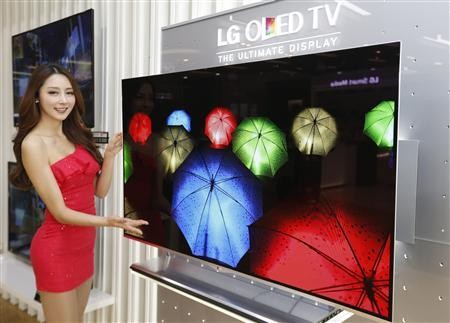Ten years after LCD TVs became the trend and overthrew huge cathode ray tubes in the market, the TV sector is now getting ready for a new generation of products using OLED (organic light-emitting diode) technology, the Shanghai-based China Business News reported.
China's TV manufacturers Skyworth and Konka both recently introduced to the public their latest 4K OLED devices, thinking that OLED is the future of TV technology, according to the paper.
Skyworth launched OLED TVs in 2013, along with South Korean manufacturers LG and Samsung. However, not one of these companies was able to reach commercial sales. Samsung discontinued production of OLED products in 2014.
Skyworth revealed on Aug. 25 the company's sales target of 30,000 units for its first mass-produced 4K OLED TVs to be launched in the market soon. The firm's TV division CEO Liu Tangzhi said that the corporation has been ironing out plans for the product launch for two years and can finally move on with its plans after LG Display started mass-producing 4K OLED panels in June.
Liu stated that OLED TVs are not backlit, which makes it possible to come in thinner forms than LCD panels. Deeper black intensity and superior contrast are just some of the advantages of OLED over other screens.
Liu projected that in 2020, the adoption of OLED TVs will reach 15-20 percent of total TV sales by unit and 30 percent of sales by value.
Konka's president, Liu Dan, said that the price markdown of OLED TVs, which now cost only twice LCD units, signifies a strategic time to launch OLED products in the market. Konka plans to start selling 4K OLED TVs on Oct. 1.
By the time the product's price drops to just 20 percent higher than LCD screens, OLED TVs will begin massively replacing LCD units, according to Konka's president.
Such a threshold may still take a lot of time to build though.
Sigmaintell Consulting vice president Li Yaqin said that the plunge in the prices of LCD panels was mainly due to an excess in supply, making it hard for OLED TVs to go against LCD TVs' low prices.
Even as Skyworth and Konka have held on to the promise of OLED technology, local competitor HiSense believes their proprietary Ultra LED (ULED) products offer a better choice, and the firm visualizes laser TVs as the future of the TV industry, according to the report.
HiSense said that local TV makers will not make much profit on OLED products, since the display panel itself covers almost 90 percent of the costs.



























